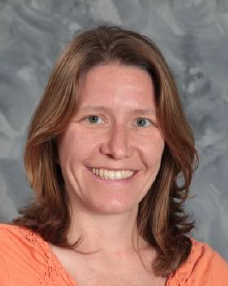Southwest Illinois Family Medicine Residency
The SSM Health/Saint Louis University School of Medicine Southwest Illinois Family Medicine Residency Program is the only fully integrated military-civilian residency of its kind.
A Message From the Program Director
Welcome to the Southwest Illinois Family Medicine Residency Program.
This residency — located in O'Fallon, Illinois — is an opportunity to work with highly skilled physicians focused on full-spectrum medical care and innovative approaches to learning. Our faculty of both military and civilian experts provide residents with deeper, richer learning experiences. Civilian and military residents have the same rotations, call schedules and didactic sessions.
Our preference for treating the whole family enables residents to see prenatal and pediatric patients and families, as well as geriatric patients. Residents treat patients from urban and rural settings, and they learn to perform a variety of medical and surgical procedures.
Please reach out with any questions.

Marjorie Guthrie, M.D.
Program director
Program Highlights
The three-year family medicine residency in Southwest Illinois offers a braod range of inpatient and outpatient clinical experience serving diverse populations, including underserved, uninsured and military communities. Residents who complete this program go on to work in fellowship programs, civilian and military practices, and other health care environments.
- Diverse patient population
- Comprehensive procedural instruction
- Learn with and from military members and civilians
- Unopposed residency at HSHS St. Elizabeth's Hospital
- Community clinic rotations
- Wellness program
- Close-knit community
Apply
The residency program has both civilian and U.S. Air Force applicants.
Civilian Applicants
- Be within two years of medical school graduation
- Have at least six months U.S. clinical experience
- Submit three letters of recommendation, including one from a primary care physician
- Have no more than two unsuccessful USMLE or COMLEX exam attemps
Interviews are conducted on a rolling basis through Janary.
To request a civilian rotation, email slubfmrecruit@gmail.com. Requests are accepted on a case by case basis and scheduled from November to January.
The program participates in the Electronic Residency Application Service (ERAS) and the National Residency Matching Program (NRMP). NRMP code: 1365120C0
Review the application process
Air Force Applicants
The military residency application process involves the Joint Service Graduate Medical Education Selection Board — a group of physicians from military residency programs that meets annually to review and match applicants to positions.
To learn more about the program, Air Force applicants may request an interview or arrange a rotation. Please note: Scheduling is dependent on intern schedules and active duty training requirements.
Request an interview or rotation
For more information, email slubfmrecruit@gmail.com.
About the SSM Health/Saint Louis University School of Medicine Residency Program
SSM Health proudly sponsors the Graduate Medical Education program at Saint Louis University School of Medicine. This university-based training program offers a world-class academic environment that fosters clinical excellence, research innovation and compassionate care. All program participants are employed by SSM Health, ensuring a cohesive and supportive experience within a nationally recognized health system.